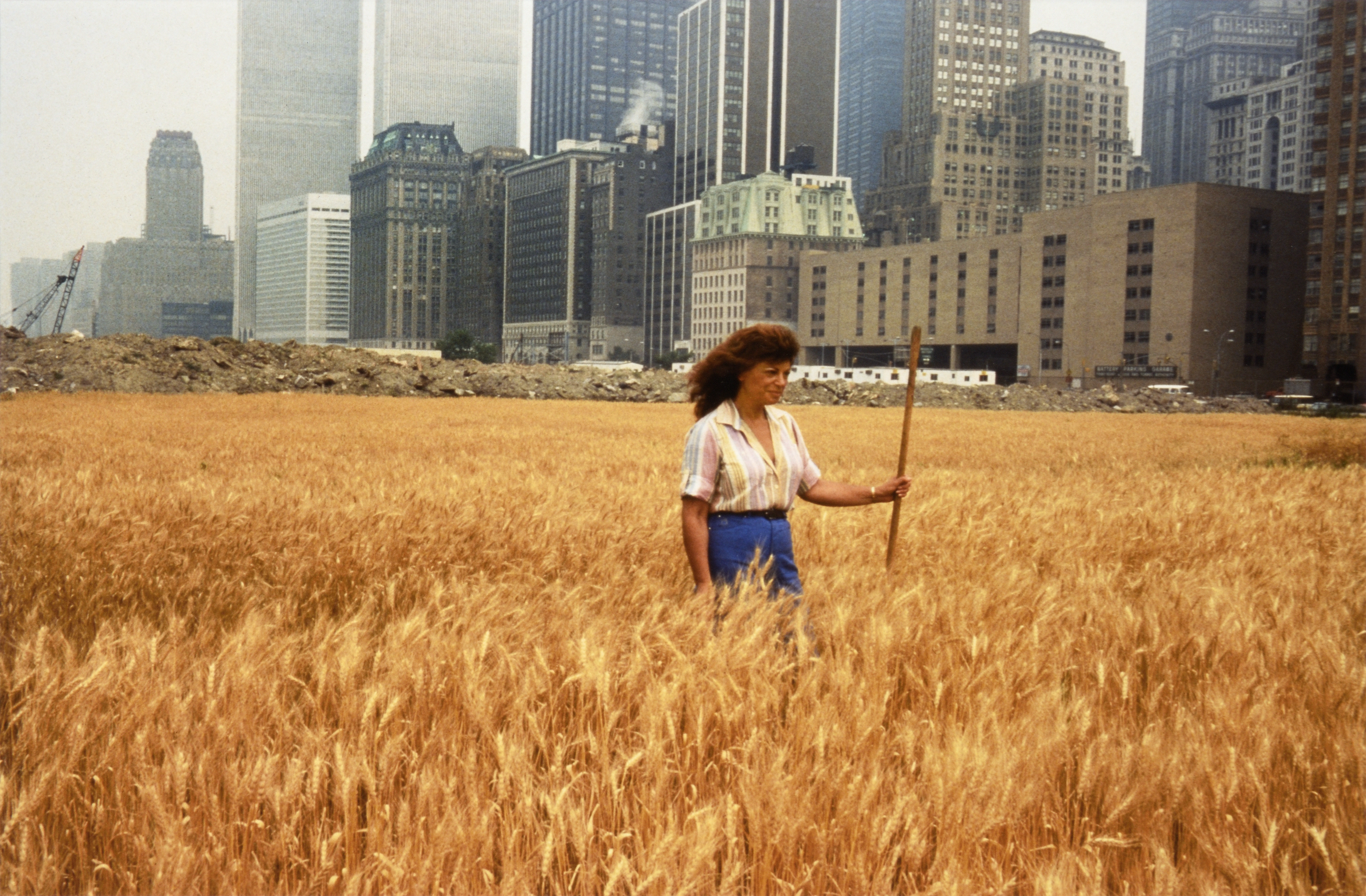"My work is a composition, a process, a place, a field of grain, a mathematical forest, benign problem solving, nature articulated through human intelligence, philosophy in the land”—says Agnes Denes about her work.
Denes considers herself a precursor of environmental art, and her numerous activities in public spaces focus on attempts to expand ecological awareness in environments intensively processed by people, such as cities or industrial and post-industrial areas. In the works created since the 1960s, Agnes Denes utilizes trans-disciplinary knowledge, combining the dynamics of natural processes and the organization of societies. One of her most celebrated activities is Wheatfield—A Confrontation: Battery Park Landfill from 1982, which cleared the landfill in downtown Manhattan and sowed two acres of wheat in that very spot. Two hundred trucks’ worth of soil were brought to the site and two hundred and eighty-five grain furrows were dug by hand. The end of the four-month trial was the August harvest, yielding five hundred kilograms of flour from the grain, which then traveled to twenty-eight cities around the world in an exhibition called The International Art Show for the End of World Hunger, organized by the Minnesota Museum of Art. Importantly, the location of where the artist sowed the field was located between Wall Street and the World Trade Center, opposite of the Statue of Liberty.
The combination of fertile soil and wheat growing on it—an archetypal symbol of prosperity—with the icons of globalization and economics based on financial speculation constituted a confrontation of incompatible ways of thinking about prosperity. Denes emphasizes that her actions desired to call attention to our misplaced priorities in the global economy and Wall Street bankers who run business as usual, producing climate debt and inequality as a side effect of the economic system. After the project was completed, the land was commissioned for the construction of a luxury apartment complex.
We present this piece thanks to the Museum of Modern Art in Warsaw. It is a part of the exhibition, The Penumbral Age. Art in the Time of Planetary Change, where the museum presented artistic works from the last five decades, based on observations and visualizations of the changes underway on planet Earth.
P.S. Another female artist, Sigalit Landau, uses one special natural resource, the Dead Sea, to create her unique art. See the stunning results here!


 Agnes Denes
Agnes Denes